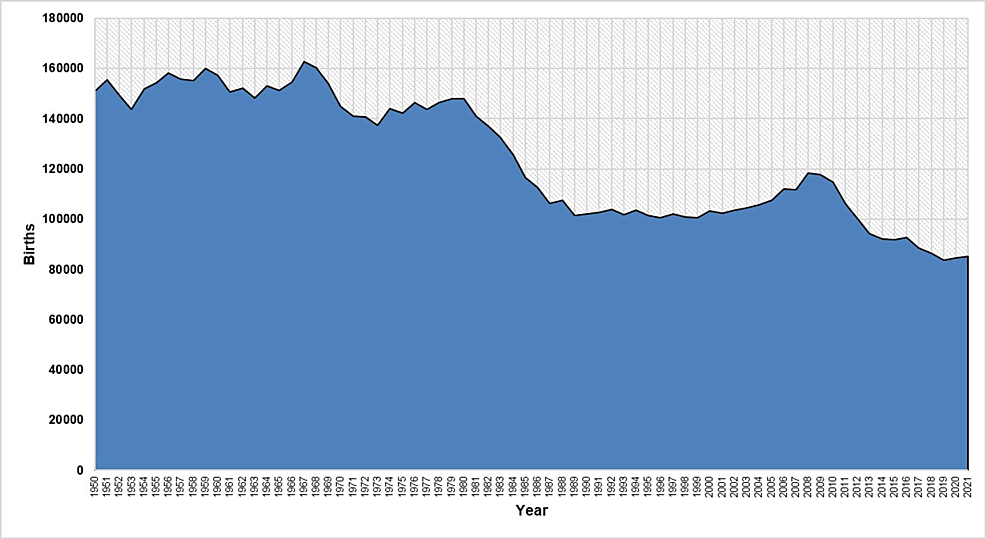Tracing Time Trends of Births in Greece Leave a comment

Introduction The aim of this study was to comprehensively investigate and present time trends in births in Greece over the last seven decades. Methods Data on live births were derived from the Hellenic Statistical Authority, covering a 72-year period from 1950 to 2021. Trends in the number of births were assessed using joinpoint regression analysis. The annual percentage change (APC) and the average annual percent change (AAPC) were calculated with a 95% confidence interval (95% CI) and level of statistical significance p<0.05. Results The overall trend during 1950-2021 was clearly downward (AAPC = -0.9, 95% CI: -1.2 to -0.7). Over the first three decades, births fluctuated to a record high of 162,839 in 1967, with an overall slight downward trend (1950-1981: APC = -0.2, 95% CI: -0.4 to -0.1, p<0.001). During the 1980 decade, the trend was sharply downward (1981-1988: APC = -4.7, 95% CI: -6.2 to -3.2, p<0.001), followed by a stabilization in the 1990s (1988-2001: APC = -0.1, 95% CI: -0.7 to 0.4, p=0.586). The first decade of the 21st century was the only period during the last seven decades with an increasing trend in births in the Greek population (2001-2008: APC = 1.9, 95% CI: 0.3 to 3.5, p = 0.021), but it was followed by plummeting trends during the recent years (2008-2021: APC = -2.7, 95% CI: -3.2 to -2.3, p<0.001), leading to the historic low of 83,756 births in 2019. Conclusion The time trend analysis of births in Greece indicated a dramatic plummet in natality in Greece, predominantly attributed to the large decline in births in the 1980s, which could not be reversed in the 1990s and 2000s. The recent decrease in births was associated with the financial recession and has put the Greek population in a disastrous low-fertility spiral.
Source


